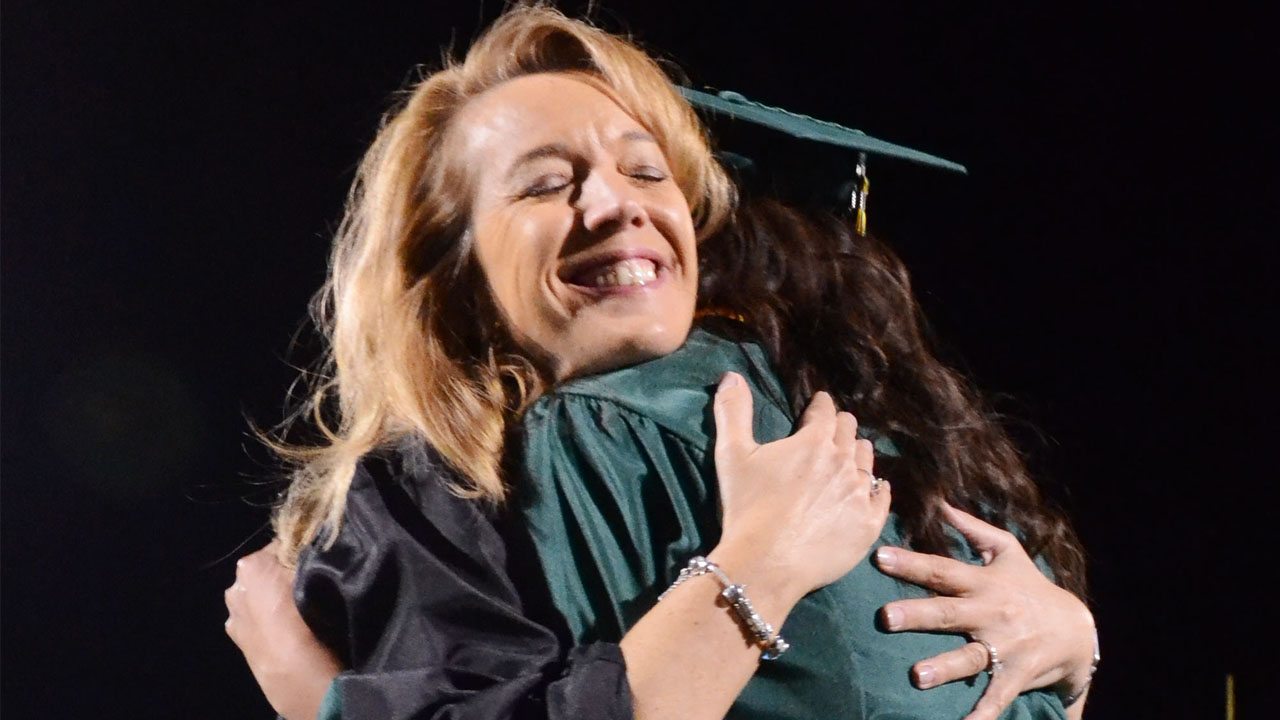The perception that teachers care about their students is among the strongest predictors of student performance. – Carol Dweck and colleagues
The actions demonstrated by the teacher may vary for each student, but an underlying espoused belief exists that each student needs to be cared for in ways that make sense to him or her rather than in ways that are the same for every student.
Though it may have become a cliché, it remains true: Students don’t care how much you know until they know how much you care. In the bustle and chaos of starting a new school year, it can be easy to forget the importance of connecting with students personally, making sure they know you care.
Caring creates a connection of mutual interest, warmth, trust and respect. These qualities become the foundation for deepening and maintaining the relationship, even when dealing with tough issues and challenges in the classroom.
The ways teachers express care will vary among students. But each approach is responsive to who each student is and what each student needs. It grows out a commitment for each student to experience the acceptance, respect, trust and sense of belonging they need to learn and thrive.
Sometimes it’s hard to make caring a priority amid the papers to grade, course material to cover, and the other demands of teaching. Some students may act in ways that makes it hard to respect, accept and trust them. However, when educators find ways — even small ways — to express care and connect with students in ways that matter to the student, not only do motivation and learning increase, but both teachers and students enjoy their time together.
Relationships between teachers and students have many dimensions, as suggested by Search Institute’s Developmental Relationships Framework and the Jostens Renaissance Results Formula™. The starting point for high-quality teacher-student relationships is caring.
Expressing care is the foundation of teacher-student relationships. A range of research shows that caring between teachers and students have a lasting impact on many educational and behavioral outcomes throughout a student’s formal education. Yet students’ experiences of caring in teacher-student relationships declines through middle school and high school.
The Power of Caring in Teacher-Student Relationships
When students experience more care and emotional support from their teachers, they are more likely to…
- Take more initiative and responsibility for their own learning.
- Pay more attention and exert more effort in class.
- Do better in school, based on grades and test scores.
- Ask for help when they need it.
- Have lower levels of anxiety.
- Have more positive relationships with peers and classmates.
- Have parents who get more involved in school activities.
It’s important to note that care, by itself, is not enough. In addition to the emotional support of caring, teachers also need to provide practice help (or “instrument” support) to help them develop skills to achieve their goals. Students can interpret a lack of practical help as a sign that they teacher has low expectations of them, which undermines their school performance.
The Positive Effects of Caring Teacher-Student Relationships Linger
The effects of caring relationships between teachers and students extend beyond the end of a school year. In fact, the care students experience can affect their behaviors up to four years later. A study of 1,067 students in Switzerland found that having strong relationships with teachers when students are ages 10 and 11 is associated with reduced problem classroom behaviors up to four years later. In fact, students who reported positive relationships with their teachers early in middle school were much less likely to argue and feel vindictive toward teachers and other authority figures four years later in high school.
Students Perceive Decline in Teacher Caring Through Middle School
As students grow up, they increasingly look to adults beyond their families as sources of support, guidance and encouragement. (It’s part of internalizing their own identity distinct from their parents.) However, across these years, teacher-student relationships tend to become less common and less positive.
Search Institute surveys of more than 120,000 students in grades 6 to 12 found only 18% of middle and high school students strongly agree that their teachers really care about them. The proportion of students who believe teachers really care drops by half through the middle school years — from 33% in sixth grade to 16% in ninth grade.
Teacher-Student Relationships Across Lines of Race and Culture
A sensitive, but important, issue in education today is how best to address inequities or gaps in education between different racial and ethnic groups of students. Much attention has been paid to culturally responsive teaching practices that can help to challenge stereotypes and address these gaps for students of color. In addition, researchers have begun examining the critical role that caring relationships between teachers and students can help to counterbalance stereotypes that undermine students’ experiences of care. Some intentional ways educators have built caring, trusting relationships with students across lines of race and culture to build mutual respect and understanding include the following:
- Validate students’ cultural heritage as a source of strength and a resource for learning. This helps cultivate respect and reinforces that students are valued for who they are. This includes structuring conversations and lessons that tap the skills and experiences that students bring from their families, cultures and backgrounds for deepening relationships and learning.
- Show personal interest in them, the things they care about and their life experiences.
- Be clear and consistent in holding high expectations for all students, thus challenging stereotypes that tend to reinforce lower expectations of some groups of students.
- Emphasize learning as a social process in which the class works together and supports each other. This includes making it a priority to include everyone and believing that the class as a whole can be successful in learning.
- Work to minimize the separation between the teacher and students by participating actively in the classroom community. This may include self-disclosure, humor and playfulness, and acknowledging mistakes, all of which can deepen mutual care and connections.
It Goes Both Ways: Reciprocity and Boundaries in Caring
Discussions of teacher-student relationships often focus only on teachers’ roles and responsibilities. However, each relationship is a two-way street; by their nature, relationships are reciprocal and bidirectional. Thus, teachers and students each play roles in how their relationship works — or doesn’t work. Those dynamics often shift and have to be negotiated and renegotiated, sometimes daily. That process can bring both great satisfaction and ongoing conflict and tension.
Critical questions about boundaries also surface as teachers seek to express care. These include:
- How much energy can and should teachers put into a particular challenging relationship?
- What forms of expressing care are appropriate and inappropriate in teacher-student relationships?
- When is self-disclosure appropriate and inappropriate?
- Where do you draw the line between relationships that promote or hinder motivation and learning?
These and other dilemmas about expressing care in teacher-student relationships are not easily answered, but they are an important part of the dynamic. Struggling through them with colleagues increases teachers’ abilities to maintain ethical, caring relationships with students.
Expressing Care in Relationships with Students
Care is the foundation of strong teacher-student relationships. It is also a two-way street. When a sense of care is shared in the classroom and school, not only will students be more motivated, but also everyone will enjoy being and learning together. These ideas highlight how you can express care with your students, based on the Developmental Relationships Framework and the Results Formula™. They also offer ways to encourage students to express care in the classroom.
General Actions |
How Teachers Can Express Care with Students |
How Teachers Can Encourage Students to Express Care |
|---|---|---|
| Be warm.
Show me you enjoy being with me. |
|
|
| Be dependable.
Be someone I can trust. |
|
|
| Listen to each other Really pay attention when we are together |
|
|
| Believe in me.
Make me feel known and valued. |
|
|
| Encourage me. Praise for my efforts and achievements. |
|
|
Jostens partnered with Search Institute to provide research-based data and advice for dealing with common school challenges. Over the past 30 years, Search Institute has studied the strengths and difficulties in the lives of more than five million middle and high school youth across the country and around the world to understand what kids need in order to succeed. Like Jostens Renaissance, Search Institute focuses on young people’s strengths, rather than emphasizing their problems or deficiencies. Visit SearchInstitute.org to learn more.
Click the button below to download the Cultivating Caring Relationships with Students guide which includes class activities, statistics and research around teacher-student relationships.
WANT TO USE JOSTENS RENAISSANCE?
If you are a Jostens customer and you need a login to access all the resources on JostensRenaissance.com, email your rep or click here.
If you don’t currently partner with Jostens for yearbooks or graduation regalia or other celebratory products, you can learn more here.



